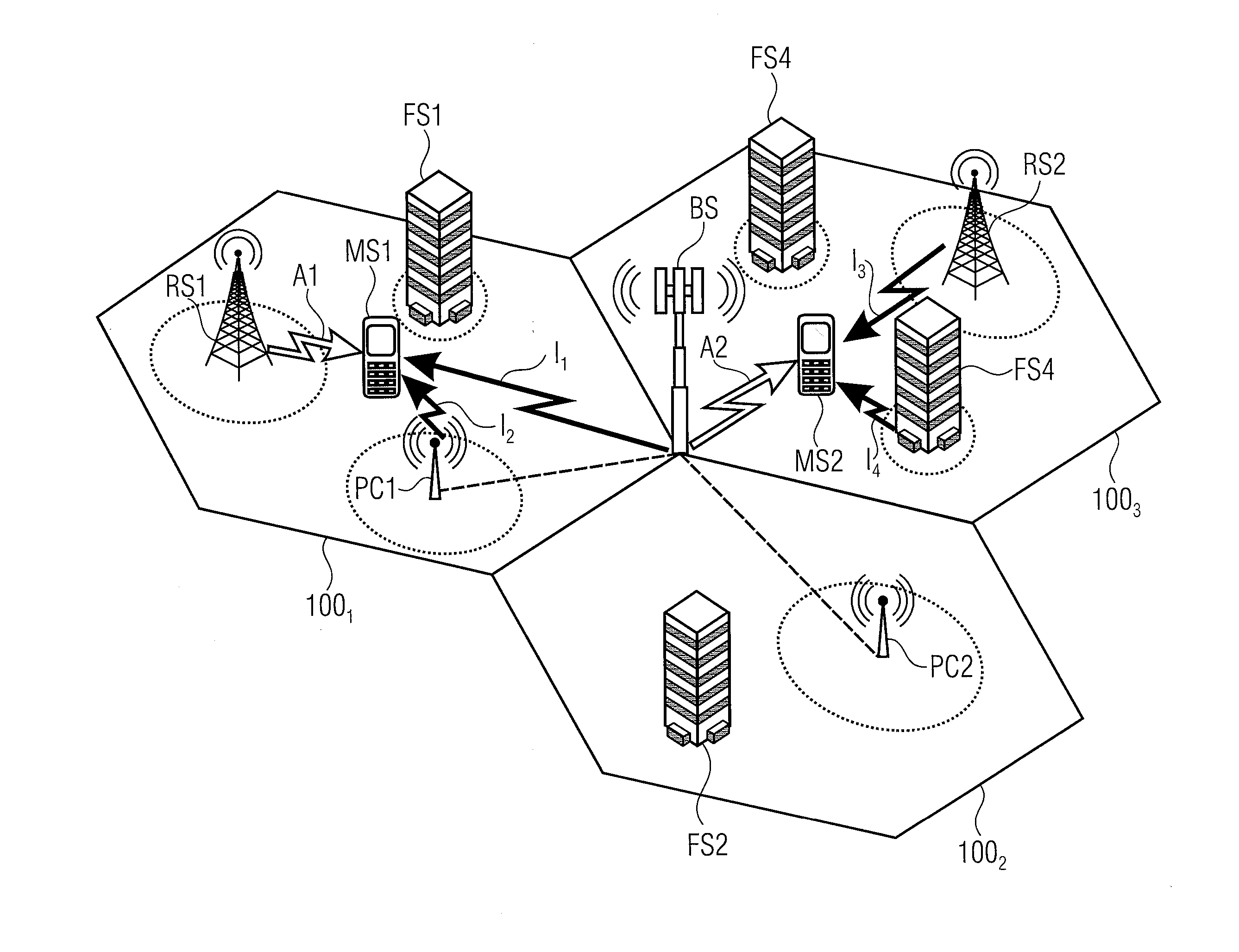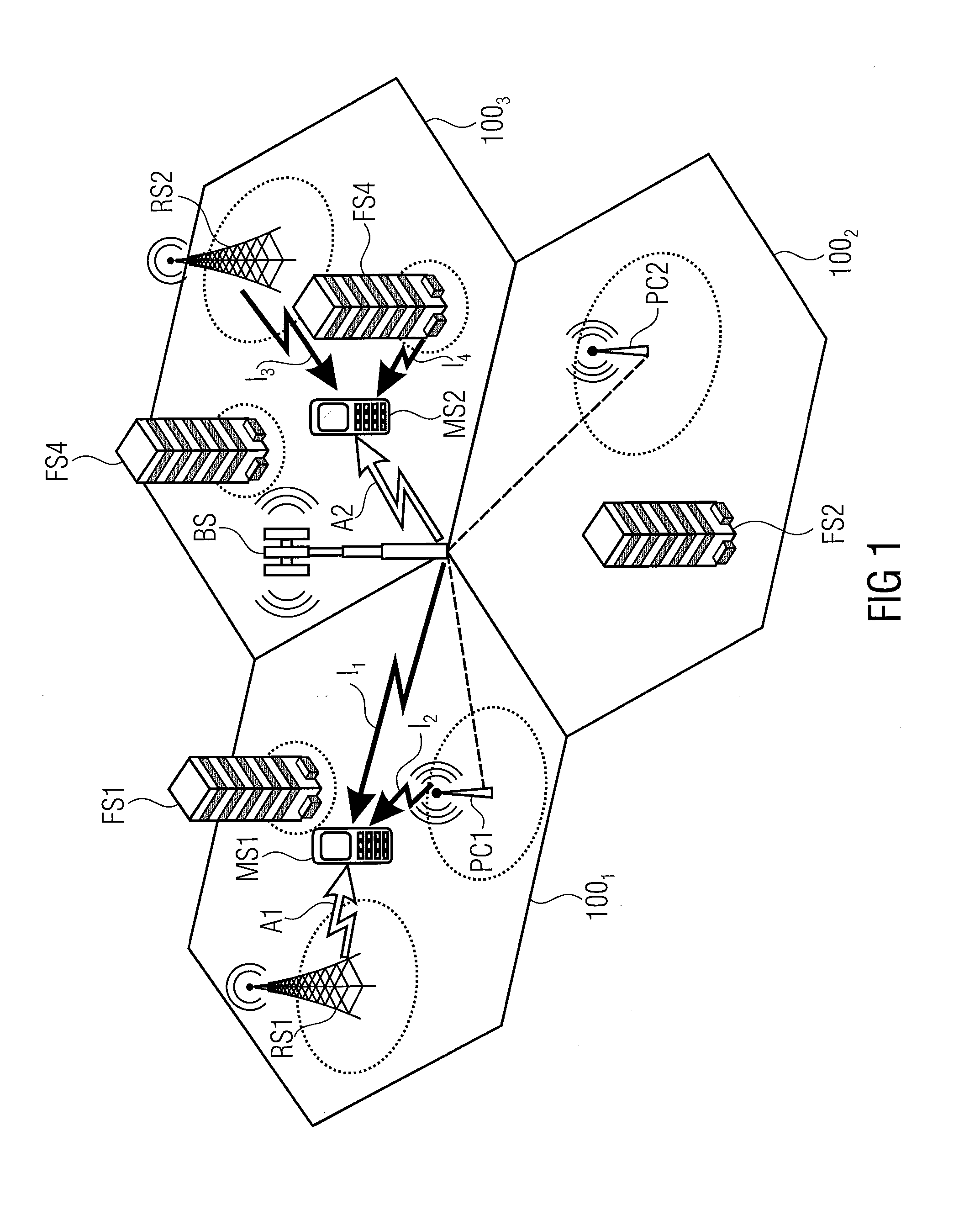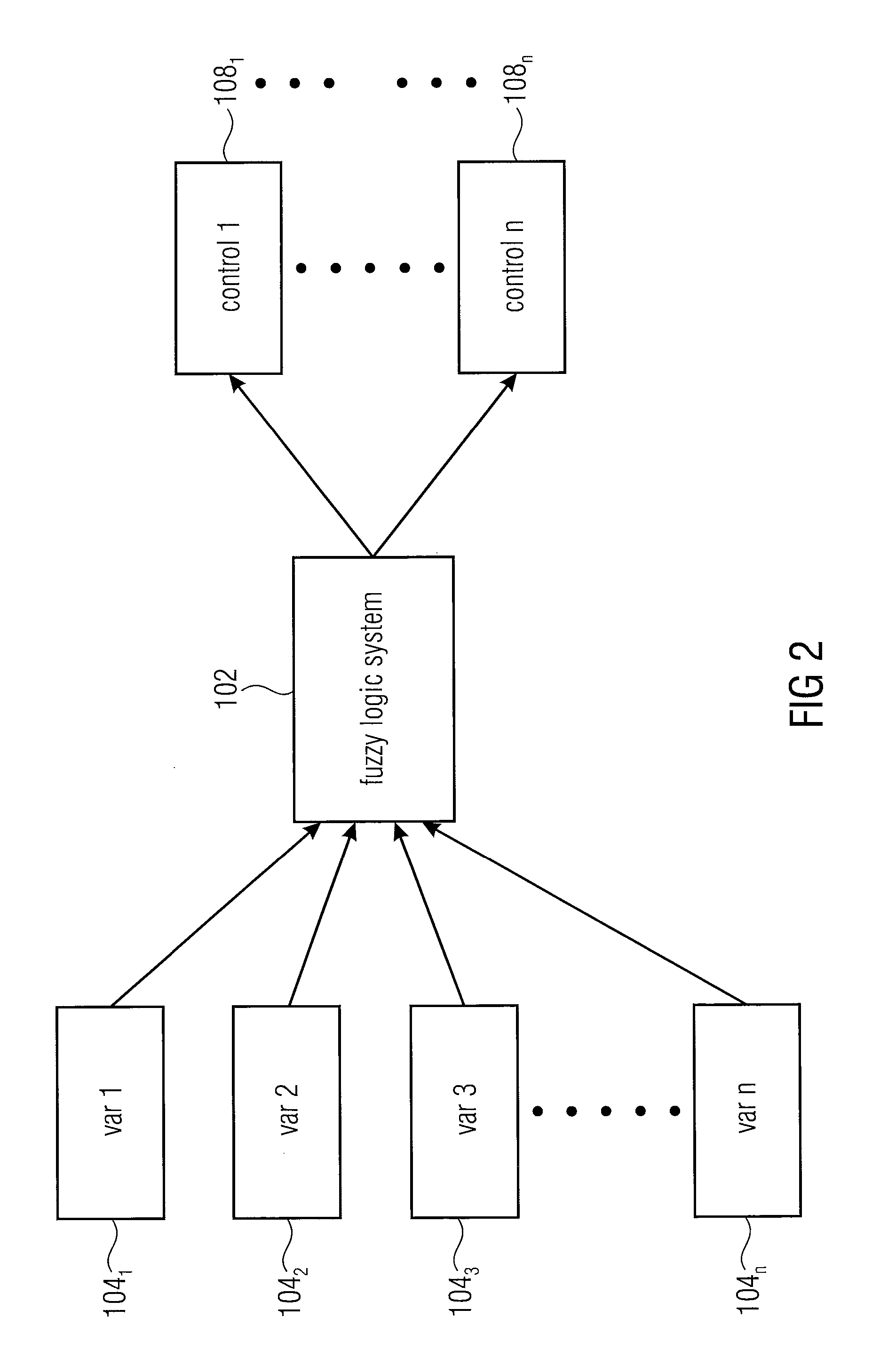Method for controlling operation within a cell of a wireless cellular network, base station and wireless cellular network
a wireless cellular network and cell technology, applied in the field of wireless cellular networks, can solve the problems of increasing difficulty in tasks, affecting the efficiency of wireless cellular overlays, so as to achieve efficient/near-optimal solutions, minimize the efficiency of cci within the network, and avoid the effect of loss of efficiency
- Summary
- Abstract
- Description
- Claims
- Application Information
AI Technical Summary
Benefits of technology
Problems solved by technology
Method used
Image
Examples
Embodiment Construction
[0093]FIG. 2 shows a simplified graphical representation of the an embodiment of the invention for controlling operation within a cell of a wireless cellular network, for example a cell as it is depicted in FIG. 1. A fuzzy logic system 102 receives one or more input variables 1041 to 104n (VAR1 to VARn). On the basis of the input variables 1041 to 104n the fuzzy logic system 102 controls the operation within the cell, more specifically one or more control operations control 1081 to 108n, which may be carried out on the basis of the output of the fuzzy logic system 102. The system depicted schematically in FIG. 2 may be provided in each of the base stations of the respective cells shown in FIG. 1, for example, it may be provided within the base station BS of the overall cell 100 or at the base stations of the pico- and femto-cells shown schematically in FIG. 1. All or at least some of the base stations (of the macro-cell, the pico-cell and / or the femto-cell) may include such a logic ...
PUM
 Login to View More
Login to View More Abstract
Description
Claims
Application Information
 Login to View More
Login to View More - R&D
- Intellectual Property
- Life Sciences
- Materials
- Tech Scout
- Unparalleled Data Quality
- Higher Quality Content
- 60% Fewer Hallucinations
Browse by: Latest US Patents, China's latest patents, Technical Efficacy Thesaurus, Application Domain, Technology Topic, Popular Technical Reports.
© 2025 PatSnap. All rights reserved.Legal|Privacy policy|Modern Slavery Act Transparency Statement|Sitemap|About US| Contact US: help@patsnap.com



